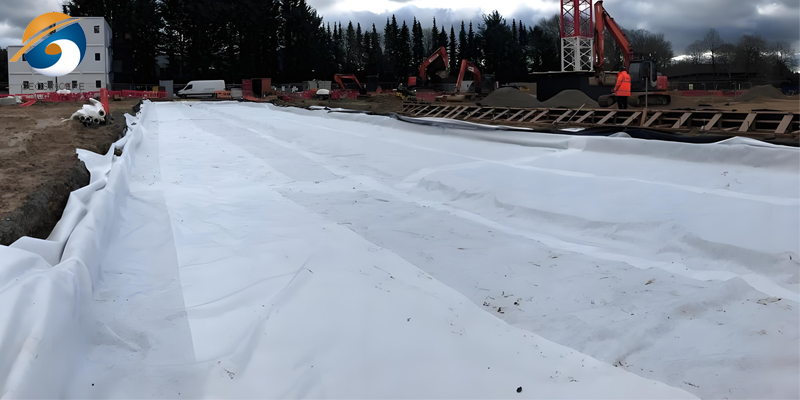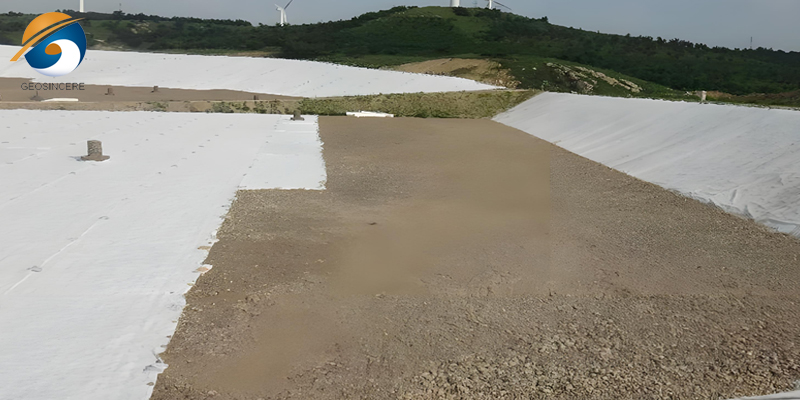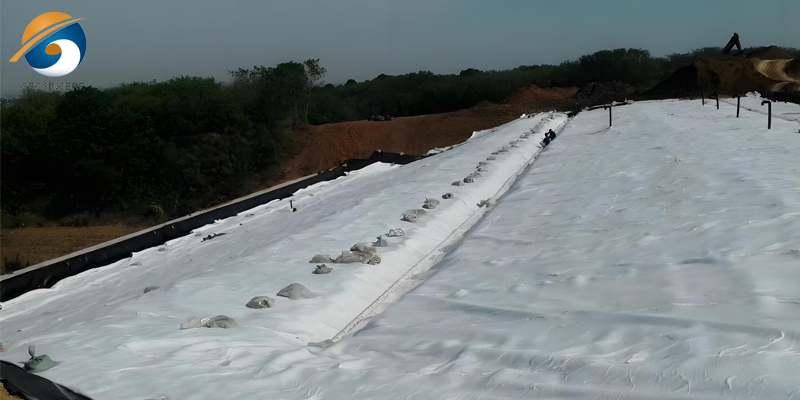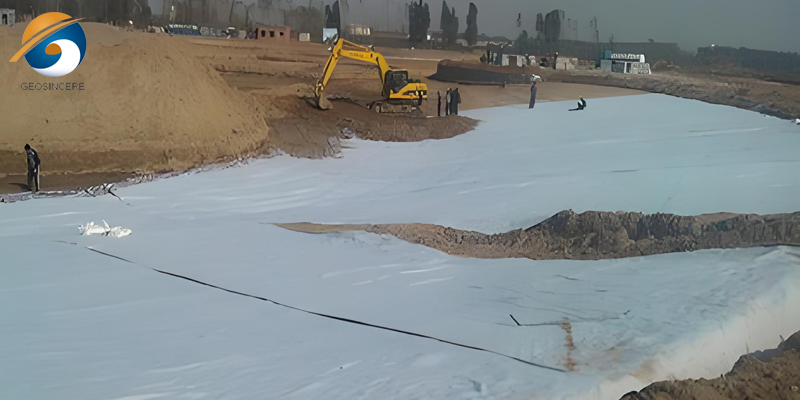Does Non Woven Geo Fabric Let Water Through?
Non woven geo fabric are broadly used materials in civil engineering and environmental protection. Made from polymer fibers bonded collectively via thermal or chemical processes, these fabric are acknowledged for their outstanding water permeability and filtration properties. They play a integral position in purposes such as drainage systems, avenue construction, soil stabilization, and environmental remediation.
This article will discover the water permeability traits of non woven geo fabric and their importance in a variety of applications. We will first analyze how the structural facets of these substances have an effect on water flow. Then, we will talk about how non-woven geotextiles correctly manipulate water motion and stop soil erosion in realistic engineering scenarios.By gaining a deeper understanding of non-woven geotextiles, readers will appreciate their value and potential in modern construction and environmental solutions.
1. What Are the Water Permeability Properties of Non Woven Geo Fabric?
1.1 High Permeability: Non woven geo fabric is designed to enable water to go with the flow thru them easily. Their structure, composed of randomly organized fibers, creates severa voids that facilitate fast drainage.
1.2 Filtration Ability: While allowing water to pass, non-woven geofabrics can lure soil particles, stopping them from washing away. This filtration functionality is critical in functions like erosion manage and drainage.
1.3 Directional Permeability: Non-woven geotextiles can showcase various ranges of permeability in exclusive directions, relying on their orientation and installation. This property can be harnessed to direct water flow effectively in drainage systems.
1.4 Hydraulic Conductivity: The hydraulic conductivity of non-woven geotextiles is a measure of how without problems water can ignore thru the fabric. This property can differ primarily based on the kind of fiber, density, and thickness of the material.
1.5 Resistance to Clogging: Non-woven geotextiles are regularly engineered to withstand clogging over time. This ensures sustained permeability, which is indispensable in long-term drainage applications.
1.6 Suitability for Various Soils: Non-woven geotextiles are fantastic with distinctive kinds of soils, making them versatile for a variety of environmental conditions. They can be used in sandy, silty, or clayey soils, relying on the unique necessities of the project.
1.7 Durability: Made from strong materials, non-woven geotextiles preserve their permeability and structural integrity over time, even beneath difficult environmental conditions.
2. Are Non Woven Geo Fabric a Reliable Solution for Water Management?
Yes, Non woven geo fabric is regarded a dependable answer for water administration due to quite a few key factors:
2.1 Effective Drainage: Non woven geo fabric facilitate environment friendly water flow, making them perfect for drainage applications. They can shortly transport extra water away from building sites, roadways, and landscaped areas, stopping waterlogging and erosion.
2.2 Soil Stabilization: By permitting water to omit whilst preserving soil particles, non-woven geotextiles assist stabilize soil structures. This is especially essential in slopes and embankments, the place soil erosion can be a big concern.
2.3 Erosion Control: These fabric are broadly used in erosion manage projects, as they can forestall soil loss whilst permitting for water infiltration. They are frequently employed in conjunction with vegetation to beautify steadiness and promote growth.
2.4 Versatility: Non-woven geotextiles are appropriate for quite a number applications, together with drainage layers in landfills, avenue subgrades, and agricultural fields. Their adaptability makes them a desired desire for various water administration needs.
2.5 Resistance to Clogging: Many non-woven geotextiles are designed to resist clogging, maintaining their permeability over time. This ensures long-term effectiveness in managing water flow without losing functionality.
2.6 Cost-Effectiveness: Using non-woven geotextiles can limit the want for considerable drainage systems, reducing common mission costs. Their effectivity in managing water helps stop high-priced harm from flooding or erosion.
2.7 Environmental Benefits: By promotion perfect water administration and lowering soil erosion, non woven geo fabric make a contribution to environmental sustainability. They assist hold soil fitness and guard water exceptional in surrounding areas.
3. What Are the Applications of Non Woven Geo Fabric in Water Management?
3.1 Drainage Systems: Non woven geo fabric is typically used in drainage functions to facilitate the motion of water away from development sites, roads, and landscapes. They assist forestall water accumulation and limit the hazard of flooding.
3.2 Erosion Control: These fabric are fine in stabilizing soil and stopping erosion in areas inclined to water runoff. They can be used in conjunction with vegetation to decorate soil retention whilst permitting water infiltration.
3.3 Landfill Projects: In landfill design, non-woven geotextiles serve as drainage layers to manipulate leachate and groundwater flow. They assist keep the integrity of the landfill shape whilst stopping illness of surrounding soil and water.
3.4 Road Construction: Non woven geo fabric is used in street building to enhance drainage and stabilize the subgrade. They assist minimize soil motion and hold the structural integrity of the roadbed.
3.5 Vegetated Swales: In sustainable drainage systems, Non woven geo fabric can be used in vegetated swales to manipulate stormwater runoff. They assist filter pollution whilst permitting water to percolate thru the soil.
3.6 Retention and Detention Ponds: Non woven geo fabric is utilized in retention and detention ponds to decorate drainage and filtration. They assist control stormwater by way of permitting for managed water launch whilst stopping soil erosion.
3.7 Agricultural Applications: In agriculture, Non woven geo fabric can be used to enhance drainage in fields, stop soil erosion, and control water runoff. They are additionally used in landscaping to separate soil layers and manipulate water flow.
3.8 Green Roof Systems: Non woven geo fabric is built-in into inexperienced roof structures to manipulate water retention and drainage. They assist assist plant boom whilst making sure desirable water management.
3.9 Silt Fencing: In building sites, non woven geo fabric can be used as silt fences to manage sediment runoff all through rain events, defending close by water our bodies from contamination.
4. Summarize
In conclusion, non-woven geotextiles offer significant advantages in water management due to their exceptional water permeability, making them essential in construction, landscaping, and environmental management. They provide effective drainage, enhance soil stabilization, and control erosion, proving to be a reliable and versatile solution across various applications while also being cost-effective.








